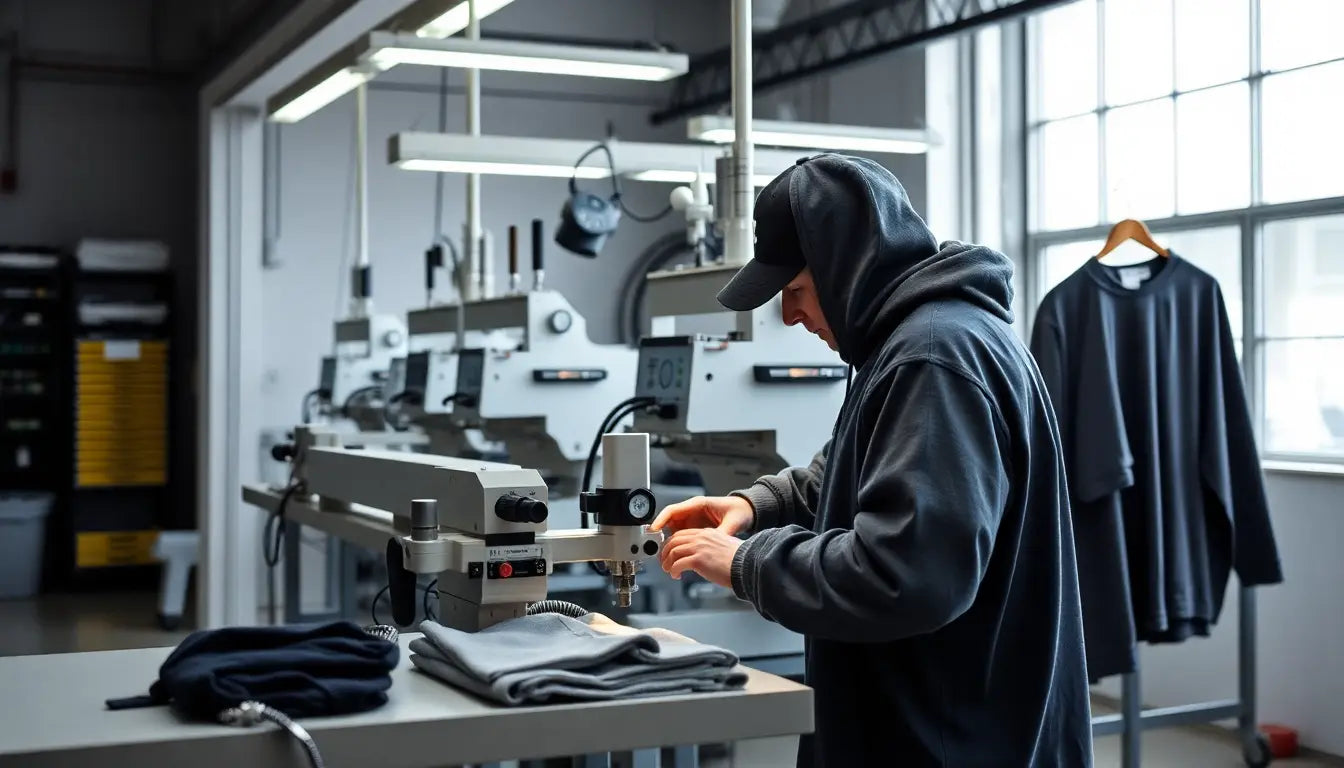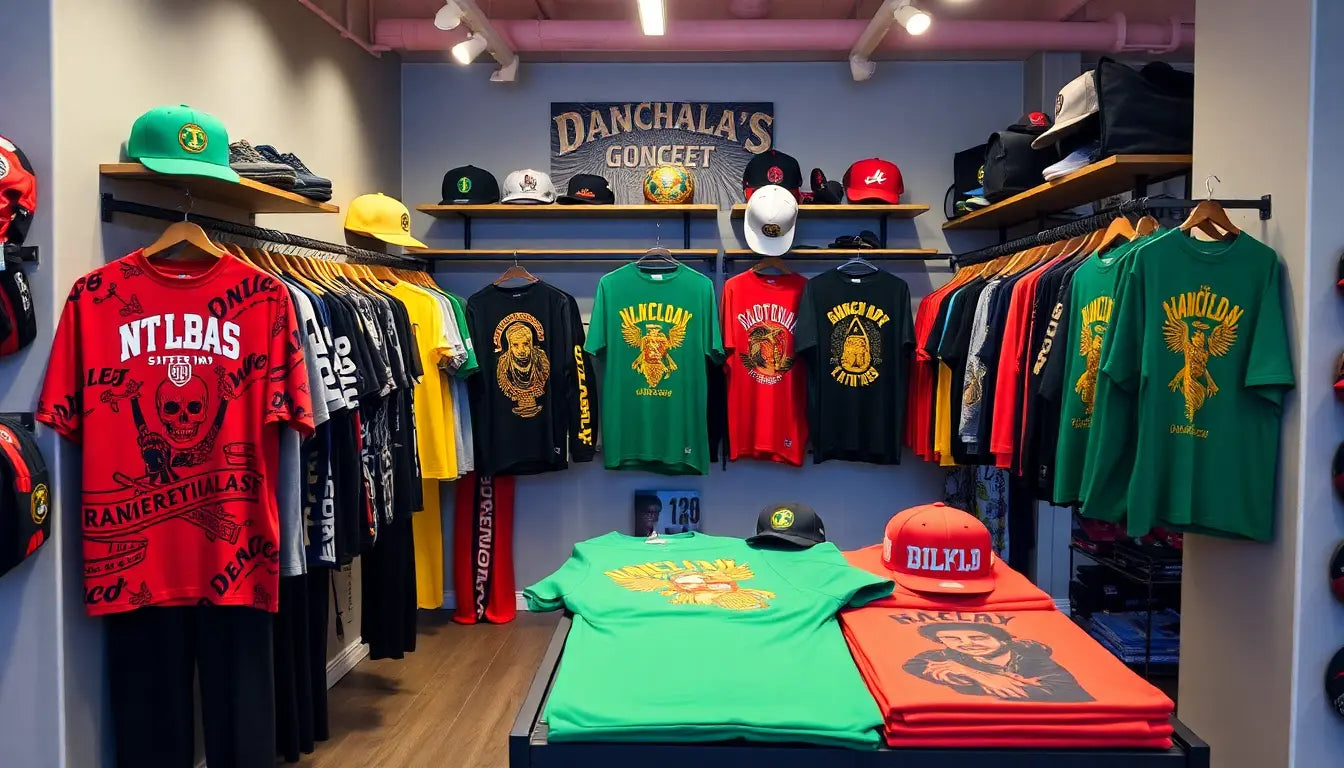
From Fan Data to Factory Floor: Operational Secrets Behind Tommy Lee Sparta’s Dancehall Streetwear Expansion
Introduction — A New Beat in Streetwear
Tommy Lee Sparta’s move from dancehall mainstay to streetwear label is more than a celebrity licensing story. It is an operational case study in how music-driven cultural influence can be engineered into a repeatable, scalable apparel business. This long-form guide unpacks the operational playbook used by artist-led brands that successfully translate fan energy into products that sell, ship, and build long-term value.
The Cultural Capital: Understanding the Brand That Drives Demand
Before you can build operations, you must understand what you are operationalizing. Tommy Lee Sparta’s brand equity is rooted in music, stagecraft, storytelling, and community. Turning that into clothing requires an operational map that preserves authenticity while meeting the realities of manufacturing, margins, and global logistics.
- Audience profile: age ranges, geographies, income bands, and lifestyle cues that inform fit, fabric preferences, and price sensitivity.
- Brand voice: visual motifs, color palettes, and messaging that must remain consistent through product, packaging, and marketing touchpoints.
- Moments that matter: album drops, tours, music videos, anniversaries, and collaborations that spike demand and should be synchronized with product drops.
Building the Data Foundation: From Streams and Mentions to Actionable Signals
Fan data is the raw material of the decision-making engine. Top artist-led brands treat fan data as an operational asset rather than an afterthought.
- Primary data sources: streaming platforms, social engagement, email behaviour, on-site browsing patterns, and merch transaction history.
- Secondary signals: ticket sales, geographic heatmaps from tour check-ins, influencer reach metrics, and UGC trends.
- Consent and privacy: implement clear opt-in messaging at festivals and e-commerce touchpoints and map data flows to privacy requirements in key markets including GDPR and other 2025 privacy frameworks.
Centralizing Fan Data: The Customer Data Platform Approach
Operational decisions require a single source of truth. Consolidate event, streaming, social, and commerce data in a central repository to create persistent fan profiles.
- CDP and data warehouse: collect identifiers, segment signals, and behavioral events.
- Identity stitching: match email, device IDs, streaming accounts, and ticket purchases to understand cross-channel journeys.
- Real-time triggers: convert spikes in streams or video views into automated marketing actions and short-run product activation signals.
Segmentation and Persona Mapping: From Macro Audiences to Micro Cohorts
Not all fans buy merch. Segmentation helps allocate production and marketing spend efficiently.
- Core collectors: superfans likely to buy limited editions and pay a premium for signed or numbered items.
- Functional buyers: fans who want comfortable staples with subtle branding and will buy repeatedly.
- Regional clusters: markets where a colorway or graphic has outsized resonance, informed by streaming and local influencer data.
- Transactional windowers: fans likely to purchase during tours or album releases; important for event-based allocation.
Product Strategy: Assortment Architecture That Balances Heat and Habits
Designs must serve both cultural expression and operational necessity. A balanced assortment typically includes limited drops, seasonal capsules, and perennial staples.
- Hero drops: limited runs tied to music moments, priced to reflect scarcity.
- Seasonal capsules: collections that refresh every quarter around trends and tour schedules.
- Core staples: T-shirts, hoodies, and caps produced in larger runs for consistent revenue and LTV growth.
- Collaborations: limited collabs with local designers or brands in target markets to extend reach and credibility.
Design to Production: Practical Product Development Workflows
Operational discipline in product development reduces surprises on the factory floor and speeds time-to-market.
- Concept and mood boards: align creative and operations early to ensure designs are manufacturable and costed properly.
- Tech packs and specifications: precise tech packs reduce rework. Include measurements, materials, stitch types, thread colors, trims, and placement specs.
- Sampling stages: prototype sample, pre-production sample, and fit sample. Use nearshore partners for fast iteration.
- Cost engineering: evaluate fabric yield, print complexity, and trim sourcing to protect margins without compromising the aesthetic.
Manufacturing Strategy: A Hybrid Factory Floor Model
Artist-led brands benefit from a hybrid approach mixing nearshore adaptability and offshore scale.
- Nearshore production: small-batch runs, rapid turnarounds, lower minimums, ideal for drops and samples.
- Offshore bulk production: long lead times but significantly lower unit cost for standard SKUs and core stock.
- Full-package versus CMT: decide whether partners will source materials or you will; full-package reduces complexity but raises control considerations.
- Minimum order negotiation: staggered production releases and rolling purchase orders keep cash flow healthy and inventory lean.
Quality Assurance and Compliance on the Factory Floor
Quality issues damage brand trust quickly. Operational checks at multiple stages ensure consistent output.
- Incoming material inspection: verify fabric weight, shade, and composition before cutting.
- Inline quality checks: sample checks during cutting, sewing, and finishing.
- Final inspections and pre-shipment audits: a line-item checklist and photo record for each bulk shipment.
- Regulatory compliance: labels, care instructions, and country-of-origin declarations tailored to target markets.
Traceability and Anti-Counterfeit Measures
Protecting a celebrity brand from knockoffs preserves revenue and reputation.
- Serialized authentication: limited pieces carry unique serial codes, holograms, or QR-enabled authenticity pages.
- Transparent supply chains: publish partner audits and sustainability claims to build trust with conscious consumers.
- Marketplace takedowns: proactive monitoring and legal frameworks for enforcement in high-risk markets.
Inventory Planning: Forecasting, Safety Stock, and Allocation
Use fan signals to build smarter forecasts and reduce both stockouts and overstock.
- Forecasting inputs: pre-orders, streaming spikes, social reach, historical sell-through, and tour itineraries.
- Rolling production plan: 8 to 12 week rolling forecasts aligned with supplier lead times and replenishment cycles.
- Allocation rules: prioritize limited drops to core fan regions and allocate staples based on replenishment velocity.
- Safety stock strategy: differentiated safety stock by SKU criticality and market volatility.
Fulfillment and Logistics: DTC First, Then Scale Globally
Fulfillment choices impact brand experience; delivering premium items must feel premium.
- Direct-to-consumer fulfillment: maintain control of premium packaging, returns handling, and customer experience.
- 3PL partnerships: use regional 3PLs to reduce shipping times and customs complexity for international orders.
- Distributed inventory: place limited inventory near high-demand markets to reduce ETAs during launches.
- Reverse logistics: efficient RMA processes and localized returns to reduce friction and cost.
Pricing and Drop Economics: Capturing Value Without Alienating Fans
Pricing strategies balance scarcity, perceived value, and repeat customer economics.
- Tiered pricing: premium pricing for limited editions, fair-market pricing for staples.
- Pre-order deposits: reduce capital risk and validate demand before full production.
- Bundles and upsells: increase average order value while moving slower SKUs alongside hero pieces.
- Wholesale and retail partners: selective wholesale can scale reach but must preserve brand story and margin controls.
Marketing Execution: Synchronizing Drops with Cultural Momentum
Marketing is not separate from operations. Successful drops are the result of meticulous timing and coordinated channels.
- Launch windows: align drops with music releases, tour legs, or viral moments identified by data.
- Content playbook: product teasers, behind-the-scenes, creator-led styling, and customer highlights.
- Email and CRM: tiered access and early windows for superfans, loyalty members, and local markets.
- Influencer seeding: target micro and regional tastemakers to activate pockets of demand identified in segmentation.
- Performance channels: invest in paid social, search, and programmatic during high-conversion periods; rely on organic during community-led spikes.
Conversion Rate Optimization and On-Site Experience
Every drop must be optimized for conversion, especially on mobile where most fans live.
- Product pages: high-res imagery, videos, fit notes, and clear sizing guides.
- Checkout flow: minimize friction, support local payment methods, and offer guest checkout with fast recovery for abandoned carts.
- A/B testing: continuously test hero images, CTAs, and copy during both evergreen and launch periods.
Technology Stack: The Integrations That Make It Work
A practical tech stack integrates data, commerce, inventory, and fulfillment into a tightly orchestrated flow.
- Commerce platform: choose a platform with extensibility for high-traffic drops and custom checkout flows.
- Customer data foundation: unify events and profiles for segmentation and personalized flows.
- Order and inventory systems: OMS and WMS that support multi-warehouse allocation and real-time stock syncs.
- Analytics and BI: dashboards surfaced for product, marketing, and operations teams with real-time KPIs.
- Automation: trigger-based emails, inventory alerts, and production triggers to minimize manual coordination.
Sustainability, Ethical Sourcing, and Long-Term Brand Health
Consumers in 2025 expect transparency. Ethical sourcing reduces brand risk and unlocks new audiences.
- Responsible materials: prioritize organic, recycled fibers, and lower-impact dyeing methods.
- Supplier social audits: ensure safe working conditions and fair wages for factory workers.
- Packaging: use recycled materials and reduced packaging innovations that still feel premium for DTC customers.
- End-of-life programs: repair offers, recycling take-backs, or buyback incentives for limited pieces.
Team Structure: Roles That Bridge Culture and Operations
Cross-functional teams reduce silos and accelerate decision-making.
- Head of Brand and Creative: protects voice and product direction.
- Head of Product and Sourcing: manages tech packs, costing, and vendor relationships.
- Head of Operations and Supply Chain: oversees production planning, QC, and logistics.
- Head of Growth and CRM: runs fan engagement, email, and paid acquisition.
- Data and Analytics Lead: builds the fan data model and drives actionable segments.
- Customer Experience Lead: manages fulfillment, returns, and post-purchase engagement.
KPIs: The Metrics That Matter
Measure leading and lagging indicators across product, marketing, and fulfillment.
- Pre-order conversion rate and deposit coverage.
- Sell-through rate within the first 30 and 90 days per SKU.
- Average order value and repeat purchase rate.
- Gross margin by drop and blended gross margin for staples.
- Fulfillment lead time, on-time delivery, and return rate.
- Customer acquisition cost and lifetime value ratio.
- Time-to-market from sample approval to fulfillment start.
Operational Playbooks and Checklists
Standardize recurring processes with concise playbooks to reduce human error during high-pressure launches.
- Launch checklist: approval gates for creative, legal, production, and fulfillment readiness.
- Factory onboarding checklist: compliance documents, PP samples, lead times, and escalation contacts.
- Returns and warranty playbook: steps for returns inspection, restocking, or refurbishment.
- Incident response: communication templates and roles for production delays, QC failures, or shipping disruptions.
Common Pitfalls and How to Avoid Them
- Relying solely on hype: always validate with pre-orders or polling before large runs.
- Overcomplicating SKUs: too many variants increase complexity and reduce forecasting accuracy.
- Underinvesting in fulfillment: poor post-purchase experience damages long-term LTV.
- Ignoring market-specific needs: sizing, climate, and payment methods vary by region.
- Neglecting legal and IP protections: register trademarks and prepare enforcement strategies early.
Case Study Timeline: From Fan Insight to Factory Shipping
Below is a condensed 16-week example timeline for turning a validated design into shipped inventory for a limited drop.
- Weeks 1 to 2: Fan research and design concepts; micro-polls and social teases to gauge interest.
- Weeks 3 to 4: Finalize tech pack and cost engineering; request nearshore samples.
- Weeks 5 to 6: Sample review, fit adjustments, and legal clearance for artwork.
- Weeks 7 to 8: Pre-order window opens with deposit; monitor conversion and adjust production quantities.
- Weeks 9 to 11: Factory production run for nearshore; inline QC and mid-run checks.
- Week 12: Final QC and packaging; prepare EDI and shipping documentation for logistics partners.
- Weeks 13 to 16: Fulfillment staging, pre-launch communication, and launch; post-launch analysis and replenishment planning.
Frequently Asked Questions
- Q: How much fan data do I need before launching merch?
- A: Even a few thousand engaged fans with purchase intent can be sufficient. The key is a reliable signal such as pre-order conversion or event merch sales that validate willingness to pay.
- Q: Should I do wholesale or stay DTC?
- A: Start DTC to own the customer relationship and margins. Consider selective wholesale after you prove product-market fit and can protect brand presentation in retail environments.
- Q: What is the minimum viable production approach?
- A: Launch with nearshore small-batch runs and pre-orders. Use deposits to finance production and limit inventory risk.
- Q: How do I price limited drops without alienating fans?
- A: Communicate value: scarcity, artist involvement, and authentic storytelling justify higher price points. Offer more accessible staples alongside limited items to keep broader fans engaged.
- Q: How do I combat counterfeits?
- A: Use serialized authentication, register IP early, monitor marketplaces, and implement legal takedown procedures. Publicly communicate authenticity measures to educate buyers.
Practical Resources and Tools
- Data and analytics: centralized data warehouse, CDP, and BI dashboards.
- Product and sourcing: tools for tech packs, grading, and costing spreadsheets templated for apparel.
- Manufacturing and QC: sample trackers and pre-shipment audit checklists.
- Fulfillment: OMS and WMS with multi-warehouse allocation and returns management.
Conclusion — Turning Cultural Momentum into Operational Muscle
Tommy Lee Sparta’s example shows that great streetwear brands require more than creative vision. Success comes from rigorous fan insights, disciplined product development, a hybrid manufacturing strategy, and excellence in fulfillment and customer experience. The brands that win in 2025 are those that combine cultural authenticity with repeatable operational systems — the kind that allow artists to monetize influence while delivering reliably high-quality products to fans.
Next Steps for Builders and Artists
Start small and iterate. Map your fan data, run a validated pre-order, build a nearshore relationship for your first drop, and instrument every launch with KPIs. Treat each drop as an experiment: learn fast, scale what's working, and keep the creative vision at the center while letting operational discipline do the heavy lifting.



